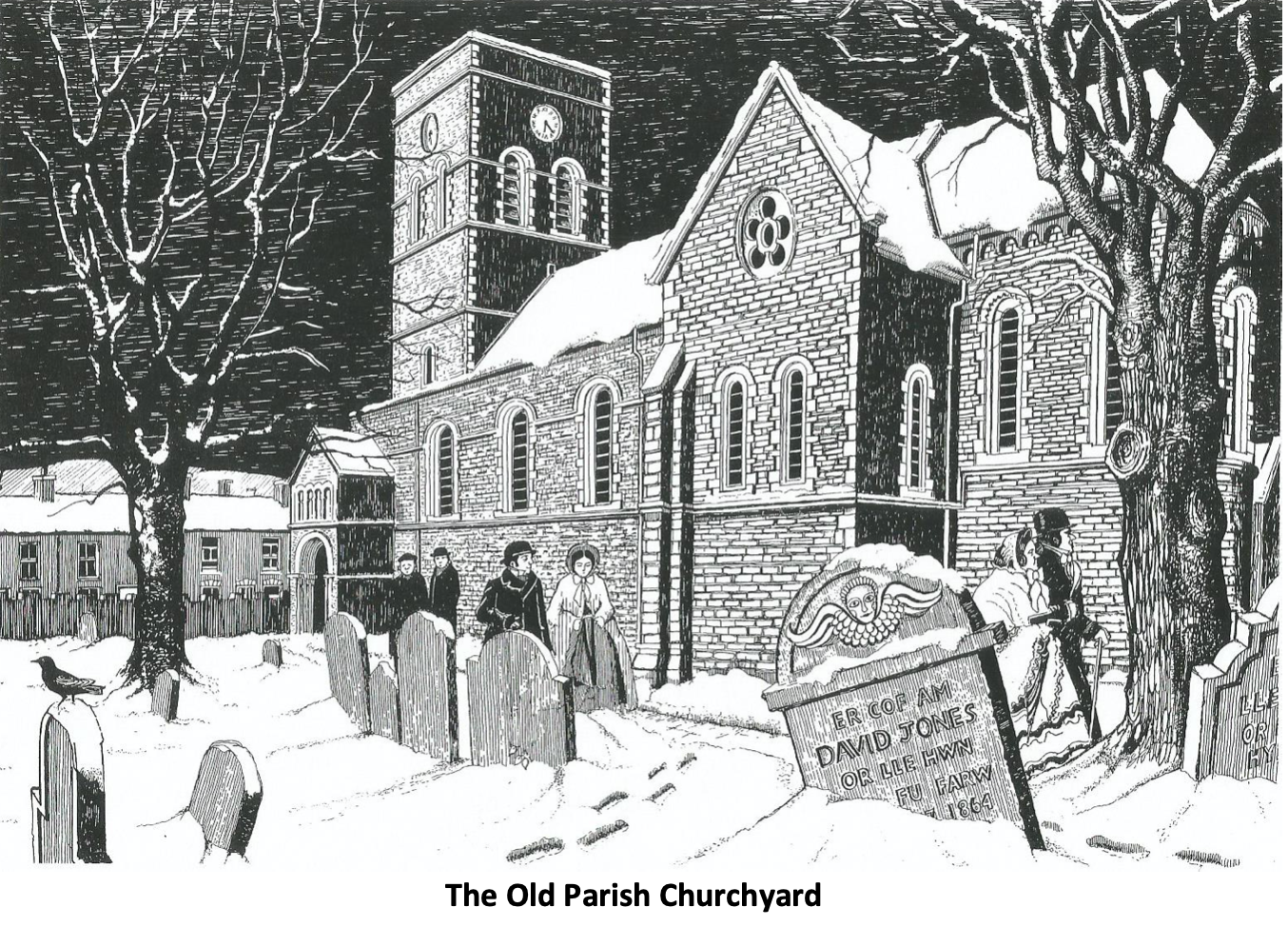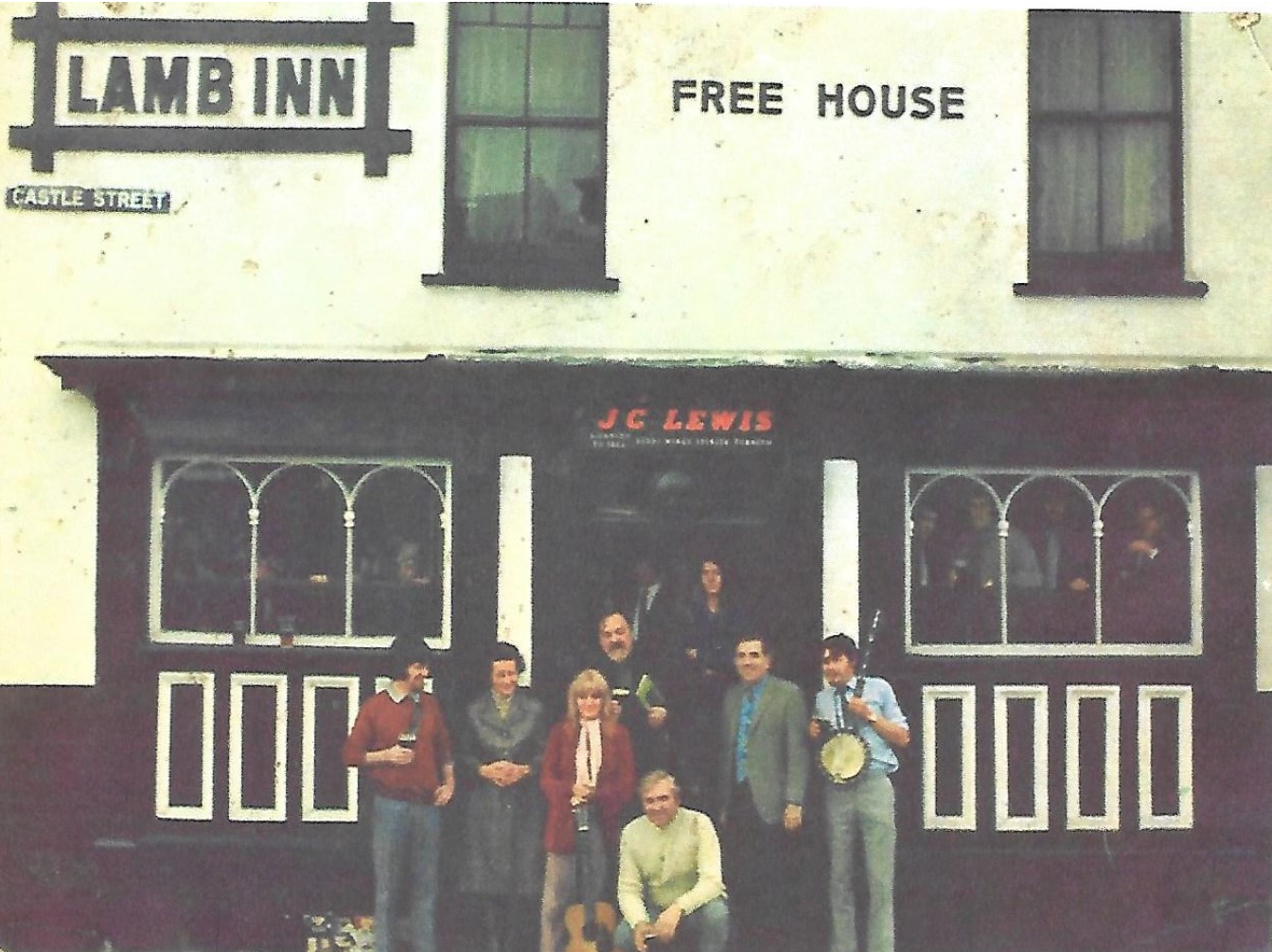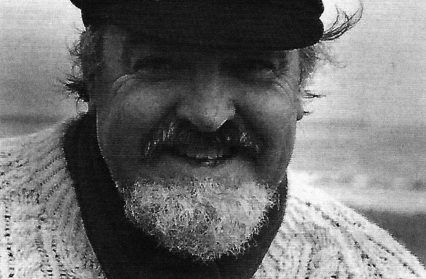Malcolm Llewellyn commemorates the hundredth anniversary of the birth of radical welsh poet Harri Webb and explores the writer’s relationship with Merthyr Tydfil; home of the many places that inspired his work.
This year is the hundredth anniversary of the birth of the poet Harri Webb, born on 7 September 1920 at Sketty, Swansea. He left Swansea at the age of 18 after being awarded a scholarship to Magdalen College, Oxford to study Modern Languages. Harri Webb was a prolific writer of poems, prose and political commentary. His close affinity to Swansea stayed with him until his final days when he resolved to move to a nursing home in his hometown. He died in his sleep in the early hours of New Years Eve in 1994. A ‘Swansea Jack’ from birth to death.
Harri Webb was appointed Librarian at the Dowlais Branch Library in Merthyr Tydfil in 1954 which started his close association with this once radical town in Welsh history. A revolutionary Welsh republican, he became a well-known, colourful character, who took an interest in the local history of the town. He learnt Welsh in his early adulthood and adopted the Dowlais dialect of the language and was one of the founder members and chairman of the eisteddfod in Merthyr Tydfil. A ‘squat’ in Garth Newydd in the town was his home for twelve years where he was joined by other patriots, including his friend Meic Stephens. The house became a centre for Nationalist activities and the ‘Free Wales’ pirate radio was broadcast from an attic in the house in response to the ban on political broadcasts by Plaid Cymru.
Merthyr Tudful: Shrine of saintess Tudful. Tudful was a daughter of Brychan Brycheiniog, the ruler of Brycheiniog in the 5th century. According to tradition, Tudful founded the holy site of St. Tydfil’s Church in the 5th century. However, it is claimed in old manuscripts that Tewdrig ap Teithfall, the grandson of Brychan Brycheiniog, was the founder of the site. The feast of Mabsant Merthyr (Martyr) Tudful to commemorate the life of Tudful used to be held in the parish during Easter week. The Chapel of St. Tydfil became the Parish Church in the 16th century. The town achieved borough status in 1905/08. The motto on the Borough Coat of Arms, ‘Nid Cadarn ond Brodyr Dde’ – Not force, but fellowship, adopted from the original motto of Edward Williams – Iolo ap Morganwg, was introduced by his son Taliesin ab Iolo.
Merthyr Tydfil, its history and people feature in several of the poems written by Harri Webb. The Old Parish Churchyard was written by Harri Webb in 1965. The poem is set in St Tydfil’s Parish Church. “New Flats” in the poem probably refers to Caedraw Flats. The “White Tip” was a tip of waste material above Merthyr Tydfil from the Dowlais ironworks, known locally as the ‘Whitey’.

I share this churchyard Sunday silence with
A nibbling sheep, another stray presence
Whose mind inherits a pattern laid down
Before Tydfil’s bones. Now we both browse
About her abandoned alter. The crisp cropping
Is louder than the traffic that buzzes
Around the roundabout just beyond the railings
Massive with rust. A few yards of grass
And straggling nameless bushes insulate
The churchyard, the Sunday, the afternoon
From a world in which there are no more
Churchyards, Sundays or afternoons.
Here they all lie, the people of This Village,
Of This Parish, under flaking local stone
Lettered in simple elegance in the
Ceremonial English of the Welsh-speaking dead:
The farmers, the lieutenants of industry
(The captains, of course, are interred elsewhere),
Some who did good, remembered by the student,
But mostly forgotten, and even these names
Only the literate generations floodlit
Between the green committals and the crematoria
Of all the dead of Wales, a land where only
The dead are secure in their inheritance.
Caved-in table-tombs, expressive once
Of aspirations in a social order, up-end
Their rotten limestone in untidy chaos.
Frost and neglect have eroded the epitaphs
Composed with such care, and now nobody bothers
Even to desecrate. The kindly, tired grass
Is doing its best to hide total abandonment.Outside the churchyard wall the new flats
Rear their functional hutches, the smooth roads
sweep over the old slums. Along the river bank
The rubble of the past is pounded to foundations
For a better world. Up on the White Tip,
Ridges of late snow gleam in weak sunshine
Like tattered banners in an old battle.
A sly wind snipes from the river Taff;
There are withdrawals, advances, but, in this land,
No victory, no defeat. At my approach
The sheep lifts her head, her twin lambs
Start up from the tombstones and scamper in their spring.
The Lamb, a public house in Castle street, built in the 1850s in the once notorious ‘China’ area was described by his friend Dr Meic Stephens, Editor of the book ‘Collected Poems Harri Webb’, as having had “a raffish clientele of regular drinkers and pint-pot patriots”. It was a haunt for colourful characters including Harri Webb himself, who immortalised this drinking-haunt for patriots and rugby supporters in his poem ‘The Lamb’, written in 1963. It was also the backdrop for a photograph of the performers of Harri Webb’s great work The Green Desert which was performed and recorded in 1971.

The Lamb
There’s a town called Merthyr Tydfil
Where no one gives a damn
There are seven hundred pubs there
But the best one is The Lamb.It stands upon the corner
Of Glebeland and Castle Street,
And there from noon to midnight
All honest drinkers meet.The landlord is a character
Of universal fame,
Though I’m sorry for the moment
I can’t recall his name.But whatever you think about him
His beer is of the best,
And discriminating drinkers
Will quaff his ale with zest.The high and lofty ceilings
Are with colour all aglow,
‘Tis said that they were painted
By Michelangelo.The walls are decked with tapestry,
The floors with carpets rich,
And when you’ve had a skinful
You can’t tell which is which.As everyone gets plastered
The repartee is prime,
And the landlord’s called a bastard
If he won’t serve after time.The glory of this tavern
Is its famous rugby team,
‘Tis said by all and sundry
Their playing’s like a dream.So let us all raise our glasses
And down many a pint and dram,
And all join in the chorus
Of Worthy is The Lamb!

The iconic Cyfarthfa Castle stands as a symbol of the pillage of the mineral wealth of Merthyr Tydfil by the four major ironworks of Cyfarthfa, Dowlais, Penydarren and Plymouth. Cyfarthfa which means: Place of the barking dogs, the name may derive from a ‘meeting- place for hunters’. The iron works at Cyfarthfa was developed by Richard Crawshay in the 18th century. It was the wealthiest ironworks in the world in 1811 and Admiral Nelson visited Cyfarthfa in 1802. Cyfarthfa Castle was built by William Crawshay junior in 1825 at the cost of £30.000. It was purchased by Merthyr Tydfil Council for £18.000 in 1908 and converted into a grammar school, museum and art gallery by 1913.
The Ironmaster Robert Thompson Crawshay, son of William Crawshay is buried under a heavy stone slab in Vaynor Churchyard with the inscription ‘God forgive me.’ The Church Tafarn stands next to the church and is the subject of the poem ‘Big Night’ written by Harri Webb in 1959. The poem first appeared under the title ‘Disgraceful Conduct’. Meic Stephens, editor of The Collected Poems of Harri Webb, changed the title to ‘Big Night’ with the permission of the poet. The poem describes one of many nights out at the legendary tavern near Merthyr Tydfil.

Big Night
We started drinking at seven
And went out for a breather at ten,
And all the stars in heaven
Said: Go back and drink again.Orion was furiously winking
As he gave us the green light
So we went back in to our drinking
Through the breakneck Brecknock night.We were singers, strongmen and sages,
We were witty and wise and brave,
And all the ghosts of the ages
Applauded from Crawshay’s grave.The tipsy Taff was bawling
A non-traditional tune
And the owls of Pontsarn were calling
Rude names at the frosty moon.And homeward we were swaggering
As the Pandy clock struck three
And the stars of the Plough went swaggering
From Vaynor to Pengarnddu.
Dowlais: which means black brook. ‘Dow’ is derived from ‘du’ which is Welsh for black and ‘lais’ from ‘glais’ which is a common word for a brook in south Wales. The name probably referred to the shaded or dark colour of the river bed. The village developed around the Dowlais ironworks. It was under the management of Josiah John Guest that the ironworks developed to become the largest ironworks in the world with a workforce of 5000 in the 1840s. Josiah John Guest was born in Dowlais in 1785. He was a generous benefactor in his community funding schools, workmen’s libraries and Dowlais Church. He became the first M.P. to represent Merthyr Tydfil in 1832. Lady Charlotte Guest, his wife, was English by birth and learned Welsh well enough to enable her to be the first to translate the Welsh tales of the Mabinogi into English in 1849. The Reverend Thomas Price (Carnhuanwc), the Welsh scholar, patriot and genius of a man, assisted Lady Guest with the translation. The Dowlais Iron Company imported iron ore from Spain and houses were built to accommodate the immigrants from Spain and a street in Dowlais, Alphonso Street was named after Alphonso XIII of Spain.

Dowlais Stables were built in 1820 by Sir Josiah John Guest to accommodate hundreds of horses used for haulage by the Dowlais Iron Company. Soldiers were based at the building for several years following the Merthyr Riots of 1831. Lady Charlotte Guest established classrooms in the stables building to educate children of the Iron Company workforce until Dowlais schools were built in 1854/55. In the 1980s, the Stables were transformed into flats for the elderly while still maintaining the original building with the facade, entrance block and flanking pavilions.

Dowlais written by Harri Webb in 1989, was his last poem. The poem celebrates the iron-town of Dowlais, the place where, according to his friend Meic Stephens, Harri Webb “was happiest and which left the most lasting mark on his poetry”.
‘Lusiads’ is an epic poem by Luis de Camoes in the 16th century, which relates to the exploits of Vasco da Gama, who first discovered a sea-route to the East in 1498.
Dowlais
That life of wonder in the Lusiads
When all the marvels of the eastern sea
Sparkled and shone in endless mystery
To daze the hungry eyes of Vasco’s lads
With scenes undreamt of, isles of luxury,
Promise of pleasure, loot and mastery,
Empire unheard of opulent dowry,
Indies on Indies dazzling myriads,
Was mine when on an iron January day
I first saw Dowlais on its iron hill
And all was iron, like its history,
The stone, the scowling church, the air
All gave me welcome and all said
At last, after long wandering, you’re there.
Malcolm Llywelyn is a writer from Merthyr. The poems in this article are from the book Merthyr Tydfil Places make History and illustrations are by local artist Dewi Bowen, and are used with kind permission.
You might also like…
Mario Basini reviews Merthyr: The Crucible of Modern Wales by Joe England, an engaging historical account of industrial-era Merthyr.












